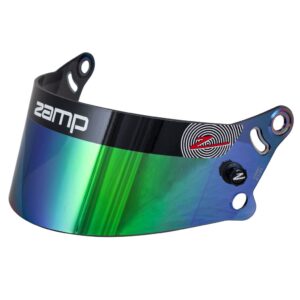When it comes to motorsport, the focus often falls on the high-speed vehicles, thrilling maneuvers, and skilled drivers who compete for the top spot. However, there’s another hero on the track that deserves attention – the humble helmet. The modern motorsport helmet is a marvel of engineering, combining innovative technologies to provide not only safety but also a competitive edge to racers. Here’s how helmets and their evolving technology are truly revolutionising the sport.
 1. Unparalleled Safety Features
1. Unparalleled Safety Features
Over the decades, the primary function of a helmet has been to protect the racer’s head in the event of a crash. Traditional helmets were designed to offer basic protection from impact. Today’s helmets, however, incorporate multi-layered constructions and materials like carbon fibre, kevlar, and other energy-absorbing components. These new materials distribute the force of an impact, reducing the chances of traumatic brain injuries.
2. Aerodynamic Technology Advancements
As motorsport has evolved, so has the understanding of the importance of aerodynamics. Modern helmets are designed to reduce drag and improve a driver’s performance. With wind-tunnel testing, helmet designs now minimise air resistance, allowing drivers to achieve better speeds and maintain better control at high velocities.
 3. Visor Innovations
3. Visor Innovations
Today’s helmet visors are not just a clear piece of plastic. They are equipped with anti-fogging technologies, UV protection, and even tear-off layers to ensure drivers have optimal vision at all times. Some high-end helmets also offer electronically-tinting visors that adjust to the changing light conditions, ensuring drivers don’t get blinded by sudden brightness or left squinting in dim environments.
4. Improved Communication Systems
Communication is key in motorsport. With advancements in technology, helmets now incorporate integrated communication systems. These systems allow drivers to maintain clear communication with their pit crews, ensuring they’re always in sync and can make strategic decisions on the fly.
 5. Ventilation and Comfort
5. Ventilation and Comfort
While safety and performance are paramount, driver comfort can’t be ignored. Modern helmets come with advanced ventilation systems to keep drivers cool under the pressure of a race. Better cushioning and customisation of inner linings ensure a snug fit, reducing distractions and allowing racers to focus entirely on the track.
6. Data Collection and Bio-metrics
The newest frontier in helmet technology is the incorporation of bio-metric sensors. These sensors monitor the driver’s vitals, like heart rate and body temperature, and relay them to the team. This data is invaluable in understanding a driver’s physical state during a race, allowing teams to strategise accordingly.
Helmets, often overlooked in the spectacle of motorsport, play a crucial role in both the safety and performance of the drivers. As technology continues to advance, we can only anticipate even more revolutionary features that will further shape the world of motorsport. So, next time you’re cheering for your favourite racer, spare a thought for their trusty helmet – a true unsung hero on the racetrack!



